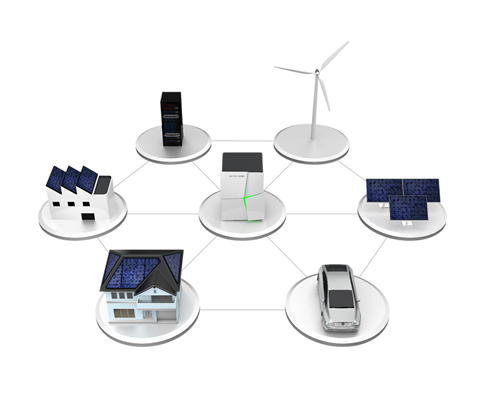What is ESS?
Energy Storage System (ESS) are equipment made to store various types of energy efficiently and safely. The term has caught attention with the rise of EV’s and solar panels, which use lithium-ion batteries as Energy Storage System (ESS). Surging demand to reduce GHG’s is also aiding the growth of the ESS market. So, energy storage needs have grown over the last decade. Applications of ESS are diverse. For example, in solar energy, most electricity is produced during the day, but the need for that electricity is at night. So, this energy converted is stored into ESS and used later to fulfil the demand in the evening.
Highlights
- Energy Storage System (ESS) is a set of equipment made to store various types of energy.
- Energy storage needs have grown over the last decade, and applications of ESS are diverse.
- Energy storage system creates long-term benefits and asset efficiency to store and utilise energy as and when needed.
- ESS integrate generation and supply of power to reduce wastage and environmental impacts.
Frequently Asked Questions (FAQ)-
What are the types of energy storage system (ESS)?
A variety of ESS has evolved because of emerging technologies, right from rooftop photovoltaic cells to electric vehicle batteries. While some energy storage system is fast responsive, others take a longer duration. Based on the technology used, various types of ESS are –
- Batteries-seen everywhere these days, this ESS technology is visible in EVs, laptops and even mobile phones.
- Thermal energy storage plants- often store and generate electricity generated from thermal power plants.
- Mechanical ESS- is the technology used in combustion engines for energy storage.
- Pumped hydro ESS-the applications of such a type of ESS is at hydroelectricity plants. It is also being used in canals by planting turbines that generate energy, which is then stored.
- Hydrogen ESS -is the technology used to generate hydrogen fuel, which is still an evolving concept.
Other than this, ESS can be classified based on application scale or utility.

Source: © Egorka87 | Megapixl.com
Why do we need ESS?
Energy demand is not always uniform throughout the day or the entire year. It varies, peaks, and falls during a day or season. But once energy generating devices start producing energy, it is costly and difficult to stop them. The energy needs to get consumed or stored. Therefore, ESS is needed to store the generated energy.
Example
In the case of electrical energy, when generated excess over demand, it must be stored. Otherwise, it will go to waste. The wasted portion will indirectly increase the cost per unit of electricity. Moreover, when being produced from renewable sources like wind and solar, storage is essential. It is because these sources are not always available. Like in the rainy season, sunlight availability is not much. Therefore, storage of electricity can keep a balance between supply (generation) and demand (consumption). It is also needed to avoid power fluctuations, decrease environmental pollution, and increase transmission grid efficiency.
ESS is thus needed for efficient use of energy. Storing electricity is a key for reliable, continuous supply at lower costs and with reduced emissions. Using ESS energy surplus in one area can be utilised in another area lacking resources. ESS in the form of batteries is beneficial for supplying energy in remote areas. Many vehicles are now running on stored electricity. Another significant need has come up with millions of users of portable electronic devices having rechargeable batteries. These include smartphones, iPhones, and even work from home laptops. ESS is also vital in high-tech manufacturing, which needs a constant energy supply to work 24x7x365.
What are the applications of ESS?
Based on applications, ESS can be classified into three major groups-

Source: © Haiyin | Megapixl.com
- Transport Application- It includes batteries and ultra-capacitors used in heavy vehicles. Most of these ESS are dependent on lithium, copper, and cobalt.
- Emergency Application-It includes batteries, thermal energy storage, hybrid system. All of these ensure a continuous flow of energy to fulfil needs.
- Extensive Scale Application-all industrial use ESS comes from compressed air energy storage to flywheel energy storage system. The energy generated powers machines and large production chains.
What are the benefits of ESS?
Energy Storage system come with the following benefits-
- Long-term benefits- Energy storage system creates long-term benefits. It helps achieve asset and process efficiency, as all the energy produced is stored and utilised whenever needed. Many ESS acts can provide generation, transmission, and distribution utilities, all in one. It integrates generation and supply to reduce environmental impacts.
- ESS reduce overall cost- Energy storage saves costs by reducing wastage. Not just for producers, it also helps reduce the cost of energy for consumers. Using ESS, businesses avoid costly operational disruptions. Supply and demand both sides are satisfied.
- Flexibility- ESS helps in avoiding disruptions. It acts as a backup and ensures uninterrupted energy flow, as and when needed. Flexibility is critical for reliability and resilient operations. Even in computers, better batteries with higher storage capacities provide operational flexibility as and when needed.
- Possibility of multiple resource integration- ESS provides the option to integrate multiple energy sources. Technology has made it possible to store energy generated from two or more resources. For example, electricity consumers can install solar power system and connect them to an ESS. The ESS then provides an option to integrate the solar power stored with the electricity from other sources. ESS thus provide options to inject or extract electricity as and when needed from various available sources.
- It is eco-friendly- ESS enables energy storage for later use. It creates efficiencies, reduces wastage and greenhouse gas (GHG) emissions, and increases existing resources' capacity offset pollution. Due to this feature of ESS, they are becoming a favourite of energy suppliers.
 Please wait processing your request...
Please wait processing your request...